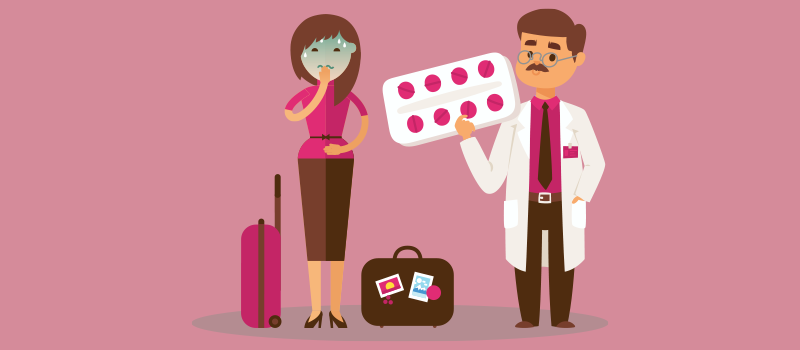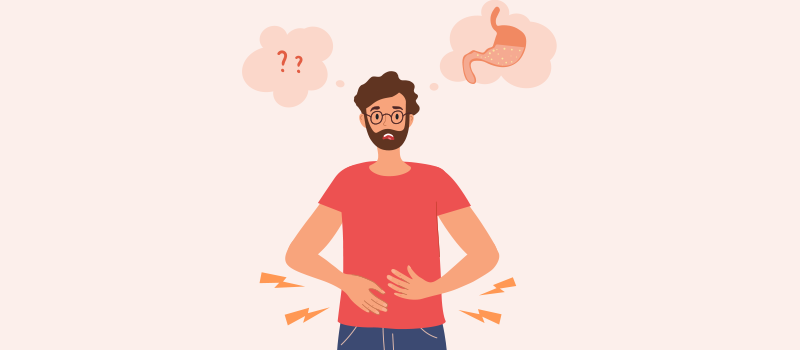What’s the Buzz
The Bee Healthy Blog
What Are the Most Effective Motion Sickness Pills?

Motion sickness is a common condition that affects millions of Americans. Children between the ages of 2 and 12 years are most commonly affected. Women, especially pregnant women, have a higher motion sickness susceptibility than men. People who have migraines also have a higher chance of motion sickness.
Taking an anti-motion sickness drug before anticipated travel can help prevent motion sickness. Please continue reading to learn which are the best motion sickness pills. We will also discuss some complementary and alternative therapies for managing motion sickness.
What causes motion sickness?
Motion-sensing organs in the body include the eyes, the inner ears, and, surprisingly, muscles and joints as well. Motion sickness happens when the brain receives conflicting information from these motion-sensing organs. For instance, motion sickness occurs when what you see with your eyes does not match what your inner ear is feeling.
For example, your ears may sense motion in a ship’s cabin that your eyes cannot see. Or your eyes may see movement in a virtual reality ride that your ears cannot sense; this is called vection-induced motion sickness. Vection is defined as a visually-induced sense of self-motion; there are many studies investigating the role of vection in motion sickness. These conflicting signals confuse the brain, resulting in motion sickness symptoms.
The most common situations in which people experience motion sickness include riding in moving vehicles such as boats, ships, cars, and buses, as well as air travel in a big airplane or being helicopter passengers. Other instances where motion sickness commonly occurs are amusement park rides, virtual reality rides, flight simulators, and 3D movies. In some people, even thinking about motion exposure can bring on symptoms of motion sickness.
What are the symptoms of motion sickness?
Motion sickness symptoms include nausea, vomiting, dizziness, headache, pale skin, cold sweats, increased salivation, rapid breathing, irritability, and tiredness.
What is a good motion sickness pill?
Scopolamine (Scopace, Maldemar, Transderm Scop) is considered the first-line treatment for motion sickness. It is a prescription medication that is available as oral tablets and a 1-mg/72-hour transdermal patch. The transdermal patch is the most common form of scopolamine for motion sickness prevention. It is applied behind the ear and left in place. Highly susceptible subjects are advised to apply a transdermal scopolamine patch 6-8 hours before anticipated travel to reduce symptoms. The effects of 1 mg transdermal scopolamine last for 3 days. It is definitely a convenient way to manage motion sickness.
There is a study supporting the use of double-dose transdermal scopolamine treatment for people who did not respond to the single patch treatment. Keep in mind that it was a small trial with 20 male sailors aged 18 to 21. Talk to your doctor if one scopolamine patch is not effective for you; your doctor will determine the appropriate treatment.
Side effects of scopolamine transdermal include dry mouth, drowsiness, sleepiness, and agitation. Other side effects include blurred vision, confusion, and disorientation.
Scopolamine is also available as an injectable form to be administered into the vein, into a muscle, or under the skin.
There are different treatments for motion sickness, including drug and non-drug options. Just like other medications, different patients react differently to different treatments for motion sickness. A good motion sickness pill is one that works well for you, and you can tolerate it well with minimum side effects.
What medications are used to treat motion sickness?
Besides scopolamine, other anti-motion sickness drugs include:
Dimenhydrinate (Dramamine)
This is an over-the-counter motion sickness medicine. It is available as a tablet and chewable tablet. An injectable solution of dimenhydrinate is available as a prescription medication. Dimenhydrinate should be taken at a dose of 50 mg to 100 mg approximately 30 minutes before motion exposure. The dose can be repeated as needed every 4-6 hours. The maximum dose of dimenhydrinate is 400 mg per day. Dramamine oral tablets are effective at reducing motion sickness symptoms; however, as an antihistamine, it can cause side effects such as dry mouth, grogginess, and blurred vision.
Meclizine (Bonine)
Bonine is an effective antihistamine that is available over-the-counter in the form of tablets and chewable tablets. The dose of this anti-motion sickness drug is 12.5 mg to 50 mg by mouth one hour before travel and then every 24 hours as needed. Side effects of Bonine (meclizine) are similar to other anti-motion sickness drugs, such as blurred vision, dry mouth, constipation, tiredness, and drowsiness.
Cyclizine (Marezine)
This over-the-counter medication can help prevent motion sickness symptoms like nausea, vomiting, and dizziness. It needs to be taken one hour before travel. The dose is 50 mg by mouth, and it can be repeated every 4-6 hours. The maximum dose of cyclizine is 200 mg per day. This medication is not for children younger than 6 years of age. Side effects are similar to other medications used for preventing motion sickness.
Promethazine (Phenergan)
This prescription medicine is used to relieve nausea and vomiting caused by motion sickness. It is available as a tablet, syrup, rectal suppository, and injectable form. The usual dose of promethazine (Phenergan) to treat motion sickness is 25 mg taken 30-60 minutes before travel and every 8 to 12 hours as needed. If you expect to have motion sickness for several days due to consecutive days of travel, it’s recommended to take 25 mg of promethazine orally or use the rectal suppository every morning and evening on travel days to reduce the symptoms of motion sickness. Side effects of Phenergan (promethazine) include dry mouth, tiredness, feeling nervous, double vision, and drowsiness.
Note: Non-drowsy antihistamines like Zyrtec, Claritin, Allegra, and high-dose ondansetron (an anti-nausea medicine) are not effective in treating the symptoms of motion sickness. Even at higher doses, ondansetron has been found to be ineffective at relieving motion sickness.
Is Dramamine or Bonine better for motion sickness?
Both Dramamine and Bonine are over-the-counter medications that work well for reducing motion sickness. If you experience motion sickness, you may find that one works better for you than the other. However, here are some points to keep in mind when choosing between Dramamine vs. Bonine:
- Many studies have shown that Dramamine is a more effective treatment of motion sickness than Bonine.
- Some people report less drowsiness with Bonine than with Dramamine.
- Bonine only needs to be taken once a day. Dramamine needs to be taken every 4-6 hours as needed.
- Bonine is only for children 12 years of age and older. You can give Dramamine to children 2 years of age and older.
What are natural ways of treating motion sickness?
Some popular natural remedies for seasickness and airsickness prevention include placing ginger root candy in the mouth and letting it slowly dissolve or wearing an acupressure wristband such as a Sea-Band. Homeopathic remedies and herbal remedies like ginger, peppermint, and black horehound have not been proven effective in the treatment of motion sickness by any controlled trial.
How can I prevent motion sickness?
You can try the following preventive strategies if you have motion sickness susceptibility:
Dietary modifications for managing motion sickness
- Do not overeat.
- Do not eat fatty, greasy, or spicy foods before traveling.
- Eat smaller, more frequent meals.
- Stay well hydrated.
- Drink carbonated sodas like ginger ale or eat dry crackers to relieve nausea.
Environmental modifications for reducing motion sickness
- Sit in the front seat of the car.
- Rest your head against the headrest of the seat to keep it still.
- Keep your eyes on the horizon.
- Turn the air vents onto your face.
- Do not read.
- Do not smoke.
In addition, controlled breathing techniques, biofeedback training, and cognitive behavioral therapy can reduce anxiety and help you relax (anxiety is known to worsen symptoms of motion sickness).
References:
- https://www.mountsinai.org/health-library/condition/motion-sickness
- https://www.aafp.org/pubs/afp/issues/2014/0701/p41.html
- https://www.frontiersin.org/articles/10.3389/fpsyg.2015.00472/full#
- https://pubmed.ncbi.nlm.nih.gov/19698013/
- https://reference.medscape.com/drug/phenergan-phenadoz-promethazine-342056
- https://reference.medscape.com/drug/antivert-bonine-meclizine-343062
- https://reference.medscape.com/drug/marezine-bonine-kids-cyclizine-100035
- https://health.ucdavis.edu/news/headlines/travel-and-motion-sickness-an-expert-weighs-in-on-dramamine-ginger-and-more/2021/07











SOCIAL